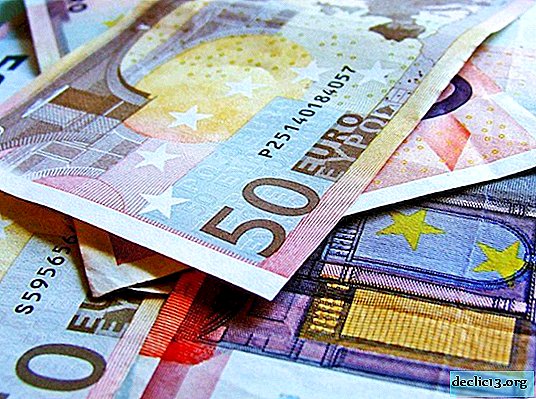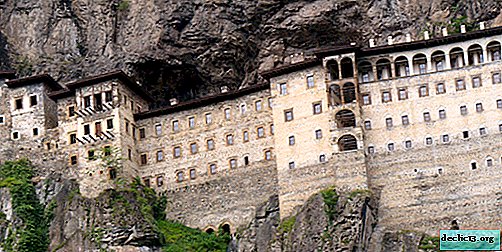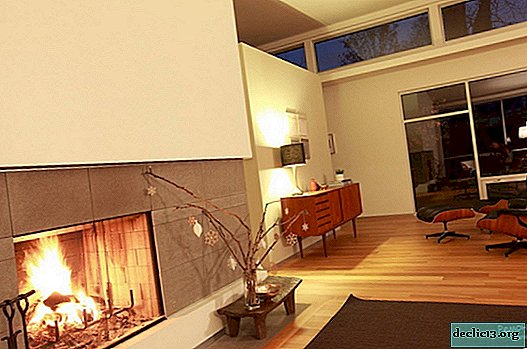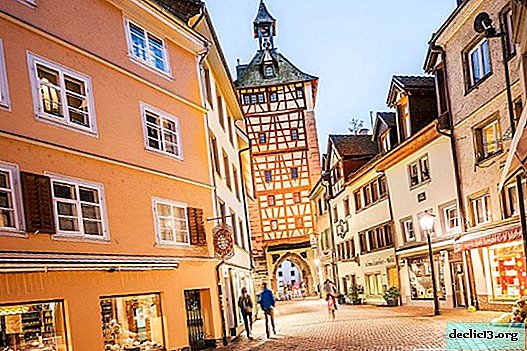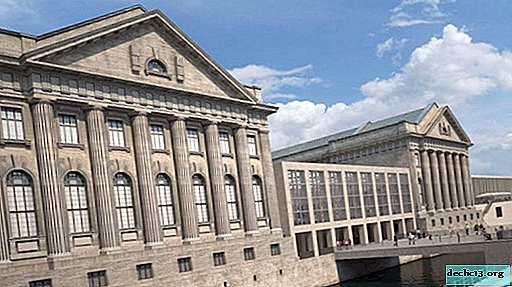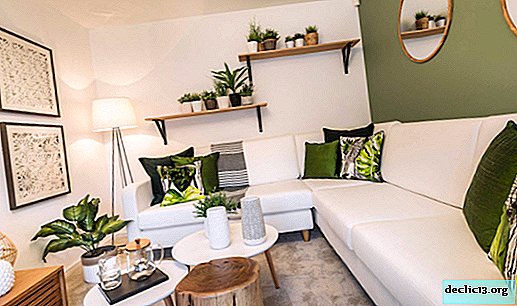Cologne Cathedral - forever under construction gothic masterpiece
The most interesting and significant architectural landmark of the city of Cologne in Germany is the Roman Catholic Cathedral of St. Peter and St. Mary. This is the official name of the religious building, the more common - just Cologne Cathedral.
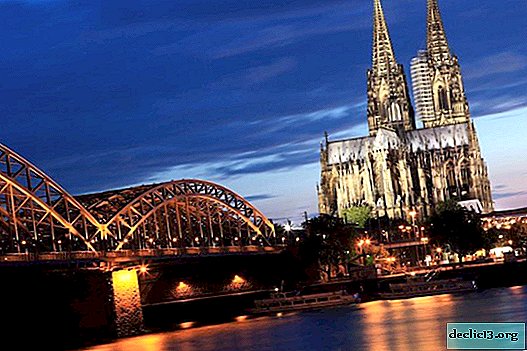
Interesting fact! A famous landmark does not belong to either the state or the Church. The official owner of Cologne Cathedral in Germany is ... Cologne Cathedral itself!
History of the temple in a nutshell
The most grandiose cathedral in Cologne is located on a place which, even during Roman times, was the religious center of Christians who lived here. Over the centuries, several generations of temples were built there, and each subsequent exceeded the previous ones in scale. In the lower tier of the modern cathedral, where excavations are currently underway, you can see what has been preserved from these ancient shrines.
 Why did you need a new temple
Why did you need a new templeIt can be argued that the history of Cologne Cathedral in Germany began in 1164. Just at that time, Archbishop Raynald von Dassel brought to Cologne the relics of the three Holy Magi who came to bow to the newborn Jesus.
In Christianity, these relics were considered a precious shrine, which was visited by pilgrims from all over the Earth. For such a significant religious relic, a worthy House was required. The idea of creating a magnificent cathedral in Germany, surpassing the world-famous cathedrals of France, belongs to Archbishop Konrad von Hochstaden.
The new church in Cologne was built in two very long stages.
How it all beganGerhard von Riehl - it was this person who made the drawings, according to which work was carried out on the erection of a grandiose structure. The symbolic stone in the foundation of Cologne Cathedral was laid by Konrad von Hochstaden in 1248. First, the eastern side of the temple was built: an altar surrounded by a gallery of choirs (they were consecrated in 1322).

In the fourteenth and fifteenth centuries, work was progressing slowly: only the naves in the southern part of the building completed and three levels of the southern tower were erected. In 1448, two bells were installed on the tower bell tower, each of them weighing 10.5 tons.
The year the construction was suspended was indicated differently in different sources: 1473, 1520 and 1560. For several centuries the cathedral in Cologne remained unfinished, and a tall crane (56 m) stood on the south tower all the time.
The second stage of construction workInteresting fact! In the Hermitage is a painting by the famous Dutch artist Jan van der Heyden "Street in Cologne." It depicts city streets of the beginning of the XVIII century, the cathedral with an unfinished tower and a crane towering above it is also visible there.
In the nineteenth century, King of Prussia Frederick William IV ordered the completion of the cathedral, in addition, the erected choirs already required updating. In those years, Gothic architecture was at the next peak of popularity, so it was decided to finish the shrine, adhering to the previously selected Gothic style. This was also facilitated by the fact that in 1814 miraculously discovered long-lost blueprints of the project, compiled by Gerhard von Riehl.

Karl Friedrich Schinkel and Ernst Friedrich Zwirner revised the old project, and in 1842 the second stage of construction work began. It was launched by Friedrich Wilhelm IV himself, laying the foundation of the next “first stone”.
In 1880, one of the longest constructions in the history of Europe was completed and was even celebrated in Germany as a national event. If we consider how much the Cologne Cathedral was built, it turns out that it is 632 years old. But even after the official celebration, the religious shrine was not stopped being repaired or finished: the windows were changed, the interior decoration was started, and the floors were laid. And in 1906, one of the towers over the central facade collapsed, and a damaged wall had to be repaired.
The years of World War II and the post-war periodInteresting fact! In 1880, Cologne Cathedral (height 157 m) was the highest building not only in Germany but also in the world. He remained a champion until 1884, until the Washington Monument (169 m) appeared in America. In 1887, the Eiffel Tower (300 m) was built in France, and in 1981 a TV tower (266 m) appeared in Cologne, and the cathedral became the 4th highest construction on the planet.

In World War II, Cologne, like many other cities in Germany, was very heavily destroyed by bombing. An interesting fact is that Cologne Cathedral miraculously survived and towered among the solid ruins, as if arising from another world.
According to military strategists, the tall towers of the building served as pilots for the pilots, so they did not bomb it. But still, 14 times air bombs fell into the cathedral, although it did not receive serious damage. However, new restoration work was needed.
Until 1948, the choirs in the cathedral of Cologne were restored, after which services began to be held there constantly. Restoration of other interiors continued until 1956. Then they built a spiral staircase leading to the site on one of the towers, to a height of 98 m.
Time to today
Due to severe environmental pollution and bad weather, numerous damages to the grand cathedral in Cologne occur all the time, which can lead to its destruction. A temporary restoration office is still located near the building, constantly engaged in repair work. In general, the construction of the cathedral in Cologne (Germany) is unlikely to be completed ever at all.
It is interesting! There is a very old legend, which says that the project of Cologne Cathedral was composed by Satan himself. In exchange for this, Gerhard von Riehl had to give his soul, but he managed to deceive Satan. Then the angry Satan said that when the construction of the cathedral is completed, the city of Cologne will cease to exist. Maybe that's why no one is in a hurry to stop the construction?
Since 1996, Cologne Cathedral has been on the UNESCO World Heritage List.
Now this temple is one of the most significant architectural attractions of Germany. In addition, as the Church planned many centuries ago, it stores the most important relics for Christians.
Architecture features

The Cathedral of Saints Peter and Mary in Cologne is an expressive example of the late Gothic style in Germany. More precisely, this is the style of northern French Gothic, and the Amiens Cathedral served as a prototype. Cologne Cathedral is characterized by a large number of exquisite architectural decor, an abundance of magnificent stone lace patterns.
The huge building has the shape of a Latin cross, which is 144.5 meters long and 86 meters wide. Together with two magnificent towers, it covers an area of 7,000 m², and this is a world record for a religious building. The height of the south tower is 157.3 m, the north is a couple of meters lower.
Interesting fact! Even when the entire city of Cologne is completely calm, winds blow near the cathedral. Air streams, meeting such an unexpected obstacle as tall towers on the gentle Rhine plain, rush sharply downward.

The feeling of the scale of the space inside the structure is also formed due to the elevation: the central nave is 2 times higher than the side naves. The high arches are supported by slender columns rising 44 meters up. The arches are made pointed, which serves as a symbol of the eternal aspiration of people up to God.
Along the perimeter of the spacious main hall of the temple are numerous chapels, chapels. One of them became the burial place of the founder of this most monumental cathedral in Germany - Bishop Konrad von Hochstaden.
Cologne Cathedral is often called "glass" due to the fact that the surface area of its windows (10,000 m²) is larger than the area of the building itself. And these are not just windows - they are unique stained-glass windows created in different eras and differing in style. The most ancient stained-glass windows of 1304-1321 were “Biblical windows” on the relevant subjects, in 1848 5 Bavarian stained-glass windows were installed in the style of the new Gothic style, and in 2007 - a large-scale window of the postmodernist Gerhard Richter of 11,500 arranged in a chaotic order, identical in size the magnitude of the fragments of stained glass.
Compare accommodation prices using this form
Treasures of Cologne Cathedral
There are a lot of significant works of medieval art in the Cologne temple, for example, frescoes on the walls, carved Gothic benches in the choir. A prominent place is occupied by the main altar, 4.6 m long, made of a single black marble slab. Niches of white marble are made on its front and side surfaces, decorated with a relief sculpture on the theme of the coronation of the Virgin.

But still, the main attraction of Cologne Cathedral is the cancer with the relics of the three Holy Magi, installed next to the main altar. The skilled craftsman Nikolaus Verdunsky created a wooden case measuring 2.2x1.1x1.53 m, and then covered it on all sides with plates of sheet gold. All sides of the sarcophagus are decorated with coinage on the life path of Jesus Christ. To decorate the crayfish, the master used 1000 pearls, stones and gems, considered the most precious at that time. The front side of the crayfish is made removable, it is removed annually on January 6 so that all believers can bow to the relics of the three Holy Magi - these are 3 skulls in golden crowns.

Another valuable relic is a wooden sculpture of the Milan Madonna. This is a very rare image of a smiling, not a grieving Virgin Mary, was created in 1290 and recognized as the most beautiful sculptural masterpiece from the time of mature Gothic.
The next unique artifact is the Hero Cross, created in the years 965-976 for Archbishop Hero. A feature of a two-meter oak cross with a crucifix in incredible realism of the image. Jesus Christ is depicted in a moment of death. His head with his eyes closed is leaning forward, his bones, muscles and tendons are very clearly visible on his body.
Treasure chestThe most significant artifacts that cannot be given a monetary value are placed in the treasury. The treasury was opened in 2000 in the basement of Cologne Cathedral and is currently recognized as the largest not only in Germany but also in Europe.

The treasury occupies a very large room, consisting of several floors. Each floor is a separate exhibition with various exhibits placed in specially illuminated shelves.
Among the most valuable artifacts in the first room are the rod and sword of the archbishops of Cologne, the Gothic cross for ceremonies, the frame of the original crayfish for the relics of the Holy Magi, and numerous manuscripts. A level below is a lapidary and a rich collection of church brocade robes. Apertures under arches are filled with shelves with objects found in Franconian graves during excavations under the foundation of the building. In the same room there are original sculptures that stood at the portal of St. Peter during the Middle Ages.
Find out RATES or book any accommodation using this formInteresting fact! Every year, 10,000,000 € is spent on the maintenance of Cologne Cathedral.
Practical information

Address at which Cologne Cathedral is located: Germany, Cologne, Domkloster 4, 50667.
It is very close to the Dom / Hauptbahnhof city train station, right on the square in front of it.
Mode of operationCologne Cathedral is open daily at such times:
- in May - October from 6:00 to 21:00;
- in November - April from 6:00 to 19:30.
It should be noted that on Sundays and public holidays, tourists are allowed into the temple only from 13:00 to 16:30. In addition, during important religious events, the entrance for tourists may be closed for a certain period of time. Relevant information can be found on the official website //www.koelner-dom.de/home/.
The treasury of the cathedral receives visitors every day from 10:00 to 18:00.
A visit to the south tower with an observation deck is possible at such a time:
- January, February, November and December - from 9:00 to 16:00;
- March, April and October - from 9:00 to 17:00;
- from May to the end of September - from 9:00 to 18:00.
Entrance to the most grandiose cathedral in Germany is completely free. But in order to visit the treasury and climb the tower, you need to pay.
| tower | treasury | tower + treasury | |
|---|---|---|---|
| for adults | 5 € | 6 € | 8 € |
| for schoolchildren, students and the disabled | 2 € | 4 € | 4 € |
| for families (maximum 2 adults with children) | 8 € | 12 € | 16 € |
As mentioned above, you can go into the cathedral and examine it yourself at a comfortable pace. But if you wish, you can take one of the many excursions that are conducted from Monday to Saturday in English. Detailed information on the proposed routes and their cost is on the official website.
Interesting fact! Almost 3,000,000 tourists visit the famous Cathedral of Germany every year - at the peak of the season it is about 40,000 people a day!
Prices on the page are for July 2019.
In conclusion - useful tips
- Outside, to the right of the main entrance to Cologne Cathedral, is the entrance to the south tower with an observation deck. She is considered a must to visit, but before climbing, you need to carefully calculate your strength. You will have to climb and then go down a very steep and narrow spiral staircase - the width is such that the oncoming flows of tourists can go away with difficulty. First, there will be a platform with a bell, on which you can go around the tower in a roundabout, and then again rise - only 509 steps to a height of more than 155 m. But the effort expended will pay off in full: from the site there is an amazingly beautiful view of the city and the Rhine. Although, many tourists claim that this is true only for the warm season, and the rest of the time, Cologne looks too stone and very dull from a height. But even if you climb in the cold season, then at the beginning of the climb you need to take off your upper warm clothes to wear it already upstairs - as a rule, there is a very strong wind.
- The towers of the monumental cathedral of Cologne are clearly visible from anywhere in the city, but the most amazing view opens from the other side of the Rhine. Arriving in the city by train, you can get out not at the station next to the cathedral, but at the station on the opposite side of the river and slowly walk to the building on foot along the bridge.
- If you have time, you need to visit the iconic German temple both day and evening. In the afternoon, its stained glass windows amaze with its splendor, especially when the sun's rays fall on them. In the evenings, thanks to the greenish glare of the backlight on a dark stone, the cathedral looks especially impressive!
- Everyone is allowed inside the temple and even allowed to take pictures. But entry is possible only without large bags and in proper clothing! Cologne Cathedral is not a museum, services are held there, and you need to respect this.
- In the treasury of the cathedral, photographing is strictly prohibited. There are cameras installed around, so you can’t take a photo unnoticed. Violators are asked to give a camera and a card is seized.
- On Tuesdays, from 20:00 to 21:00, free organ concerts are held in the temple. Given their huge popularity, you need to come in advance in order to manage to take a good place.


Interesting facts about Cologne and Cologne Cathedral in this video.





